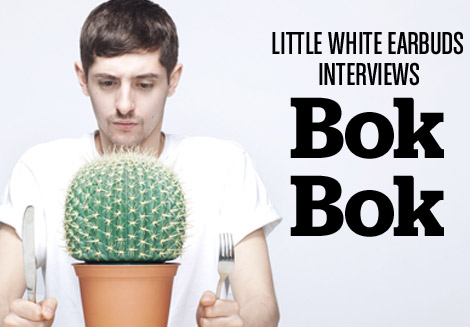
Night Slugs needs little introduction these days. Few labels today command as bold a visual presence or carry a roster of such ambitious producers. What started as a club night intended to recast grime has since evolved into a multi-disciplinary platform connecting a fuzzy network of disparate musical scenes around the world. Home to an immediate circle of raw talent including the likes of L-Vis 1990, Bok Bok, Jam City and Girl Unit, and part of a broader coalition with the Fade to Mind crew in Los Angeles, Mike Q, Helix, Pearson Sound and many others, Night Slugs is firing on multiple fronts, cranking out slick GI music videos in homage to Kubrick, atemporal production designs in corporate architecture, and 12″ after 12″ of dance devastation. If you catch any of the above’s recent RinseFM fill-ins or mixes these days, then nagging descriptions like “neon synths” sound stale and inadequate to describe the label’s flurry of recent activity. As Bok Bok discloses in this interview — done in advance of his May 24th appearance at Smart Bar as part of Signal — Night Slugs is an outlet that exists in between modern pop music and other design pursuits, and it’s this in-betweenness and “stickability” that makes it so dynamic and agile a creative force.
What is a misconception about DJs or designers?
Alex Sushon: I don’t know that many designers and am not really in the design community so much at the moment, so I can’t comment. But a common misconception of DJs is we are wind-up party animals with hangovers. That is kind of a boring stereotype.
When is DJing and/or design the most frustrating?
DJing is most frustrating when the atmosphere isn’t right. Design is the most frustrating all the time.
What’s your worst trainwreck?
What is this “trainwreck”? My universe is an absolute grid.
Does competition make you a better designer/DJ/producer/artist?
I would say less competition and more a sense of community. It’s nice to know we’re not alone out here!
Do you spend more time anticipating your next mix or do you spend more time reflecting on mixes you’ve completed?
It depends on where I’m at. I just released NSMIX001, which is the first official Night Slugs mixtape. So I’m not really working on any others for the time being. I’m not exactly spending tons of time reflecting on a mixtape that just dropped but sometimes I go back and listen to old mixes or radio sets of mine just to see in what ways thing have changed, would I still play a set like that now, etc. It’s good to reflect on that stuff.
When is design the most fun?
Design is the most fun when I’m as far removed from the actual image-making process as possible.
What can club music learn from design?
Maybe it should be more like what can design learn from club music! But in my head good examples of both are modular, simple and well-executed.
You once said, “The two ways I work is I draw stuff in, but also I play stuff in.” Can you describe these two kinds of spaces of working?
I’m not sure what this was in reference to but I assume I was talking about writing tracks — just different processes to make something. I’m not a great keyboard or drum player, so often times I make pattern visually with blocks of midi, but sometimes I play stuff in and record it.
Some of the themes I read in NS artwork are the monolith in varying contexts, text made with elements typically used for construction (masonry, beams, columns, trusses), and their blurring across the axes and depth of the page using conventions of isos/axos and perspective. Can you elaborate on these? What is their relationship to the music for you, and what brought you to this way of drawing?
Recently the art of the label art has evolved a bit and it’s slowly changing into something else. But I guess key themes to both the label’s music and art have been modularity/stickability — the idea that the tracks are all building blocks for a greater construction — and the idea of locations atmospheres that haunt the tracks, or otherwise settings for the tracks to take place in and play out in a certain environment.
What does the graphic landscape of London’s music scene look like to you, and where do you see Night Slugs in it?
I would not say London’s music scene on the whole or its underground dance scene that we belong to have really got a unified visual style. It’s kind of a mish-mash visually, often a bit underdeveloped, whimsical or an afterthought. I really wanted to do something different with NS and make the visuals a much stronger part of the whole project. It’s such a powerful medium and has such power to contextualize the music we put out.
Can you offer a couple parting thoughts on where you think Night Slugs will go visually and musically in the meantime?
Where the label is headed right now is away from some of the vernacular that seems to have crystallized around our music. It’s all stuff I fed the world at the time — “neon synths” and all this kind of stuff — it all feels like a hangover from 2010 and has already become cliched. In the meantime, our music is evolving and maturing with every release. Jam City’s album is going to introduce a lot of new textures and the new Club Constructions series is all about visceral dance floor sweat, not the club escapism our main series is known for. Things will continue to develop.













[…] a recent interview with Little White Earbuds, despite only being offered some half-baked email questions, Night Slugs […]